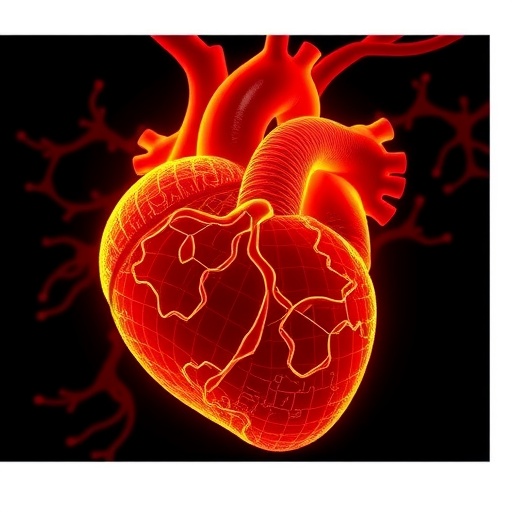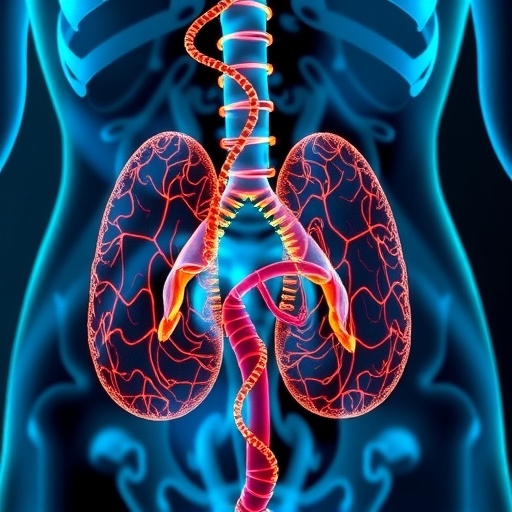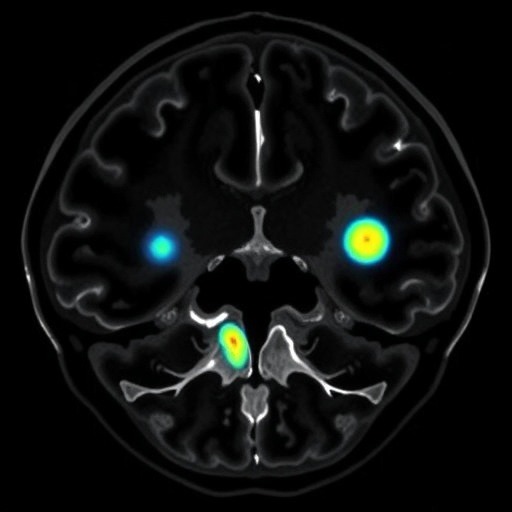In a groundbreaking study poised to reshape our understanding of chemotherapy-induced cardiac injury, researchers from West China Hospital of Sichuan University have identified a novel molecular pathway linking doxorubicin toxicity with ferroptosis, a regulated cell death modality pivotal in cardiomyocyte damage. This discovery elucidates how doxorubicin (DOX), a widely used anthracycline chemotherapeutic agent, exerts deleterious effects on heart muscle cells through intricate biochemical interactions, opening avenues for targeted cardioprotective strategies.
Doxorubicin’s efficacy in combating an array of malignancies—including breast cancer, melanoma, colon and prostate cancers, as well as pediatric leukemias—remains unparalleled. However, its clinical utility is notoriously hindered by dose-dependent cardiomyopathy, a progressive deterioration of cardiac function often culminating in heart failure. Previous research hinted at ferroptosis, an iron-dependent lipid peroxidation-driven cell death process, as a central mechanism in this cardiotoxicity, yet the exact molecular targets orchestrating this pathological cascade remained elusive.
The investigative team, under the leadership of Dr. Wenwu Ling, deployed sophisticated experimental models combining molecular biology techniques with in vivo assessments to delineate the interaction network implicated in DOX-induced myocardial injury. Their results highlight Glutathione S-transferase P1 (GSTP1), a detoxification enzyme pivotal in maintaining intracellular redox equilibrium, as a direct binding substrate for doxorubicin within cardiomyocytes.
Contrary to expectations, DOX exposure did not significantly alter GSTP1 protein expression levels, underscoring that the cardiotoxic mechanisms are not mediated via downregulation of this enzyme. Instead, the research revealed a pronounced inhibition of GSTP1’s enzymatic activity upon DOX binding. This functional suppression implicates GSTP1’s catalytic role in modulating oxidative stress as a critical determinant of cardiomyocyte survival in the context of chemotherapeutic insult.
Further mechanistic exploration demonstrated that the DOX-GSTP1 interaction initiates a signaling cascade via the activation—and subsequent phosphorylation—of the c-Jun N-terminal kinase (JNK) pathway. Phosphorylated JNK facilitates transcriptional upregulation of acyl-CoA synthetase long-chain family member 4 (ACSL4), an enzyme integral to lipid metabolism and a known pro-ferroptotic mediator. Upregulated ACSL4 levels intensify lipid peroxidation, thereby exacerbating ferroptotic death in cardiomyocytes following DOX treatment.
Functional assays corroborated that overexpression of GSTP1 materially attenuates ferroptosis markers and mitigates the severity of DOX-induced cardiomyocyte damage both in vitro and in animal models. Conversely, silencing ACSL4 expression through targeted gene knockdown strategies offered a protective effect, substantiating ACSL4’s pivotal role downstream of the GSTP1-JNK axis in promoting ferroptotic death.
This cogent elucidation of the DOX-GSTP1-JNK-ACSL4 pathway reframes our molecular understanding of chemotherapy cardiotoxicity and holds substantial translational promise. Modulating GSTP1 activity or interrupting this signaling cascade could represent viable therapeutic interventions aimed at preserving cardiac function during anthracycline chemotherapy, addressing a critical unmet need in oncology and cardiology intersections.
The study also highlights the nuanced role of GSTP1 beyond its traditional enzymatic detoxification, implicating it as a molecular switch modulating intracellular signaling pathways critical in cell fate determination under oxidative stress. This underscores the intricate interplay between redox homeostasis and regulated cell death modalities implicated in therapy-induced organ damage.
Dr. Wenwu Ling emphasized the novelty of their findings: “Our data indicate that doxorubicin’s direct binding impairs GSTP1’s enzymatic function, unleashing a cascade through JNK phosphorylation that culminates in ACSL4-mediated ferroptosis. This insight not only clarifies molecular events leading to cardiotoxicity but also identifies GSTP1 as a promising molecular target for cardioprotective drug development.”
Given the widespread clinical application of DOX and the severe implications of resultant cardiomyopathy, this research impacts both fundamental biomedical science and clinical practice. The identification of GSTP1 as a linchpin in DOX-induced ferroptosis expands the horizon for developing cardioprotective agents that can be co-administered in chemotherapy regimens, potentially improving the therapeutic index and patient outcomes.
The implications extend to personalized medicine paradigms, where GSTP1 activity profiling could inform patient stratification or risk assessment for DOX cardiotoxicity. Further, therapeutic strategies enhancing GSTP1 function or inhibiting the downstream JNK/ACSL4 signaling axis may complement existing cardioprotective approaches such as iron chelation or antioxidant therapy, offering multifaceted protection against chemotherapy-induced cardiac injury.
This study was rigorously peer-reviewed and published in the Chinese Medical Journal in October 2025, marking a seminal contribution to oncologic cardiology research. The multidisciplinary team leveraged advanced molecular assays, pharmacological interventions, and animal modeling, underscoring the comprehensive nature of their investigative approach.
Beyond its direct clinical relevance, the elucidation of the GSTP1-mediated pathway in ferroptosis regulation presents potential insights applicable to other pathological contexts where ferroptotic mechanisms are implicated, such as neurodegenerative diseases, ischemia-reperfusion injury, and metabolic disorders.
Subject of Research: Animals
Article Title: GSTP1-mediated inhibition of ACSL4-dependent ferroptosis via JNK pathway in DOX-induced cardiomyopathy
News Publication Date: 5-Oct-2025
Web References:
https://doi.org/10.1097/cm9.0000000000003758
References:
DOI: 10.1097/cm9.0000000000003758
Image Credits:
Dr. Wenwu Ling, West China Hospital of Sichuan University
Keywords:
Cardiology, Molecular biology, Cell biology, Pharmacology, Oncology, Toxicology, Biochemistry, Genetics, Clinical research, Heart disease
Tags: anthracycline drug effectscardiomyocyte lipid peroxidationchemotherapy heart damagedose-dependent cardiomyopathydoxorubicin-induced cardiotoxicityferroptosis in cardiac injuryGSTP1 protective rolemolecular pathway in chemotherapynovel findings in cardiac researchredox balance in heart cellstargeted cardioprotective strategiesWest China Hospital study





